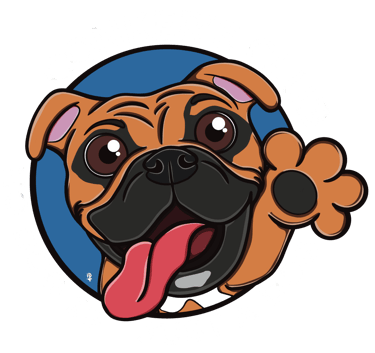Without observing each case it's hard to diagnose exactly why your dog is being reactive. There are some things to be aware of if you aren't sure if your dog is reactive or not.
Symptoms
Are they hyper engaged with every dog they see?
Are they pulling the lead to get to other dogs or people?
Do they become vocal around other dogs or people?
Is the hair on their back raised in a line towards their tail?
Are they licking or chomping their own mouth?
Any baring of teeth is an instant sign of reactivity although not always aggression.
It's very important to be aware that just showing one sign of reactivity doesn't mean there is a problem. Some of the signs for example are just your dog being excited, but the difference between an excited dog and a reactive one is whether they will still listen and check in. It becomes a problem when your dog is pulling on the lead to greet every person or dog. We then start to dread the walk and this feeds into that negativity.
Reactivity
The reasons a dog would be reactive can usually be broken down into a few different categories.
Fear
Fear is the most common reason for reactivity that we see. It may be presenting in a number of ways but the underlying issue is that they are scared so we need to find out why- and then how we can reassure them. The first thing you should do is seek the advice of a vet, as hidden pain can cause reactive behaviour. A lack of leadership is another common cause of underlying fear in your dog. If they don't think you are in control of the situation they will take it upon themselves to keep their family safe. If they don't respect your leadership they will guard their food bowl or bark at passing dogs as a way of telling them to keep away from their family.
Fun
Whether intentionally or otherwise, it's possible to add value to almost any action and being reactive is no different. This is something we have to be conscious of when we are playing with our dogs- always make sure they are playing in a structured way. We can achieve this by making them drop the tug toy and getting them to sit before the game resumes, for example. Something to avoid is squeaky toys. We have covered this in more detail in the foundations tab but in short, if your dog associates a squeak and biting with a good time, the next time they see a small squeaking animal or small child they could start the biting game.
Frustration
If your dog has a need that is not being met, they may be using the only language that has got that need met in the past. If they have been corrected too many times without a reward, they can become frustrated and lash out. You may also have a breed that has a particular drive (like a Collie and herding) that they haven't been able to channel in an appropriate way. Have a look at the page about choosing your breed for more information on drive and how to use it to your advantage in training.
Causes
We know it can be incredibly frustrating to deal with a reactive dog. It's harder to take them out, and it's harder to have people come round without chaos, so your life can get very small. But like everything there is a way we can work through this and if you do it together your bond will be stronger because of it. We have to take things back to basics.
Leadership- they have to learn that they don't need to lead or protect anyone because you have that covered, and that you will listen to their signals when they are scared.
Impulse control- we need to put in the 'check in' step between them having a thought and acting on it.
Markers- correct the reactivity, and when they are being calm you reward. If they then get overly excited again, you go back a step and reward again when appropriate.
It will take time for them to unlearn their negative behaviours but be patient with them and with yourself. Don't run before you can walk, it's more important here to set yourself up to have wins than to overdo it and go backwards.




